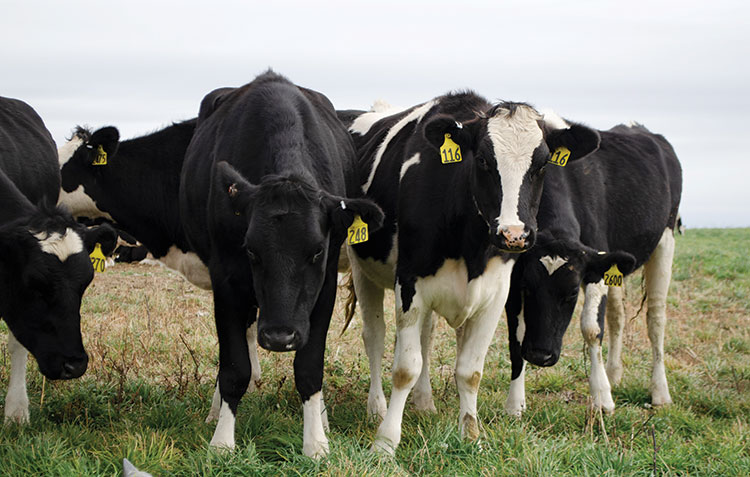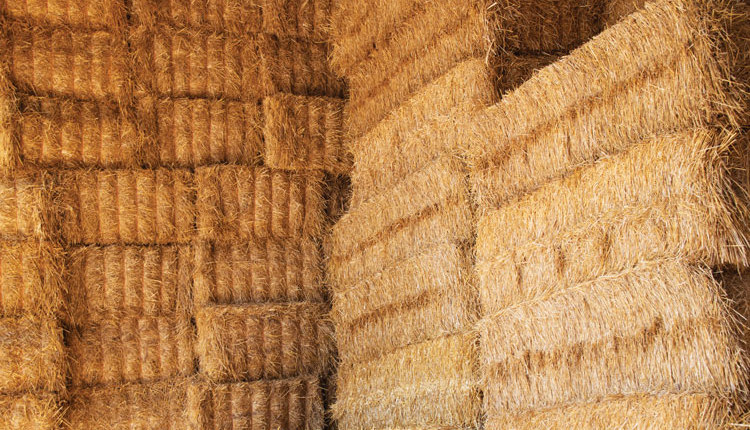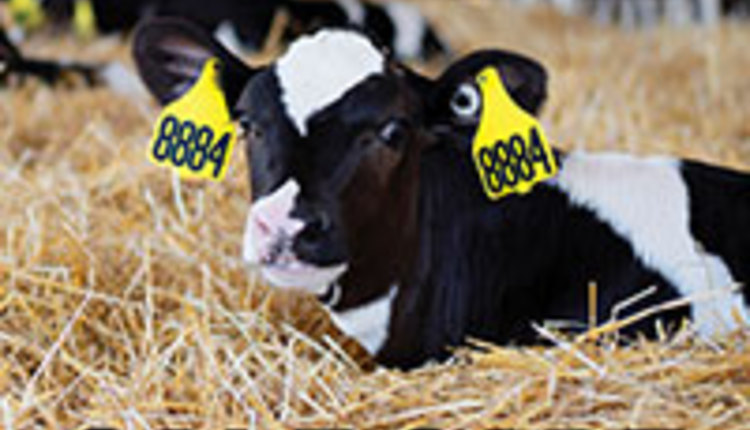
In the past, it was generally recommended that dairy farms raising their own replacements on an ongoing basis needed enough heifers to equal 90 to 110 percent of their total cow numbers (milking and dry). Another way of doing it was simply raising every heifer calf born.
That philosophy worked well for years. Farms following this formula seemed to have the right number of replacements to fill the culled cow spots.
But where are we now?
On many farms, management has changed — significantly so when it comes to heifers.
We can calculate the number of heifers needed as: (herd size [milking and dry cows]) × (cull rate) × (age at first calving ÷ 24) × (1 + noncompletion rate for heifers). The heifer noncompletion rate accounts for heifers that are born alive but are sold or die before they calve. Cull rate here includes animals that die.
On the other hand, we calculate how many heifers will be produced in a year as follows: (herd size) × (12 ÷ calving interval) x (percent female calves) × (1 – calf mortality rate) × (24 ÷ age at first calving). Calf mortality counts deaths in the first 48 hours after birth.
Let’s look at the items that go into these equations and consider how much things have changed.
First, there is age at calving. This number has been dropping slowly over time, but it has dramatically changed in the last five years.
Calving at 26 months of age or more meant a herd needed more heifers, but many farms are now calving at 22 or 23 months. That one change alone means significantly fewer heifers are needed! In addition, better heifer breeding programs have helped reduce the range in age at calving on a farm, saving money on feeding those older heifers.
Consider mortality and losses next. It used to be standard to have 6 to 8 percent calf mortality, but now many farms are at 2 percent or less. Postweaned heifer culling (heifer non-completion rate) used to be 4 to 5 percent as a standard, but now with better management and means of getting animals bred, it is common to see 1 to 2 percent at most.
About the only thing that remains the same is the heifer to bull ratio using conventional semen. Then again, using sexed semen can change this input, too.
Along with improvements in heifer reproduction, some herds have significantly improved reproduction in the cow herd as well, with less days open and higher herd conception rates. This often translates to fewer cows being culled for breeding failures. This can provide an opportunity to do more culling for economic reasons or to cull fewer cows.
With rapid genetic progress, heifers remain a source of improved genetic potential for milk production. When heifer rearing costs are high relative to the value of cull cows, though, it is often more economical to keep cows and sell heifers rather than sell cows to make room for heifers in the milking string.
Other points to ponder
There are factors not in these equations that deserve some consideration, too. As cows mature, they typically produce more milk. First lactation animals generally produce 85 percent of the milk that mature cows (third and greater lactation) do. Second lactation animals generally make 95 percent of the milk produced by mature animals.
Finally, we have the situation of an oversupply of heifers in the industry. If a single herd has too many heifers, one option is to cull more. However, as already discussed, this could hurt the herd’s overall milk production. To make that situation worse, cull prices are low, meaning heifer raising costs may be twice as high as the income received from selling a cull cow.
In relation to culling cows, remember that it generally takes two or more lactations to pay off the cost of raising a heifer, and we need to think of three lactations as just breaking even. So, culling adult cows heavily can be costly.
Selling bred heifers or heifers close to calving can also be a possibility. However, it seems that at any age you might sell a heifer, the going rate is about half of what you have spent on raising the animal. For this reason alone, we need to think strongly about culling heifers early.
What should you do?
First, calculate the number of heifers that you need per year and how many you expect to produce given the indices of your herd. Look at the past two years of culling rates and add a margin of error. If you are a small herd owner and low risk person, perhaps add 15 percent heifers to your number needed. Larger farms may get away with 5 percent or even less. This might depend on your herd size, the spread of calvings over the year, and perhaps seasonality of calving.
The next step is to determine your cull rate by month and back calculate how many calvings are needed in a given month to replace culled cows. With this information, you can determine an approximate number of calves needed in each calf group and compare that to current inventory to see if any surplus or deficit exists. When you have extra calves, don’t wait until you have a lot of money into them. Shed your losses as soon as possible.
As heifers are growing, cull heavily on health. We know that respiratory issues have a big impact over the entire lifetime (lung damage is permanent). Severe intestinal issues may also fit the cull list, but these issues are often less traumatic, and animals will bounce back if it has not been a long-term issue.
Using these calculations, we have found herds often need heifers equal to 70 to 80 percent of the cow herd at most, and exceptional herds may need only 65 percent to maintain herd size. That is a far cry from the old 110 percent recommendation.
As a bonus, fewer heifers means less overcrowding in heifer pens and barns. Fewer heifers means less time spent training heifers to learn milking and management systems. Other impacts are potentially greater supplies of forages and feeds for the milking cows and more income from milking a slightly older herd. Most of all, since heifers are the second or third largest line item in the total cost of milk production, fewer heifers means less expense.










